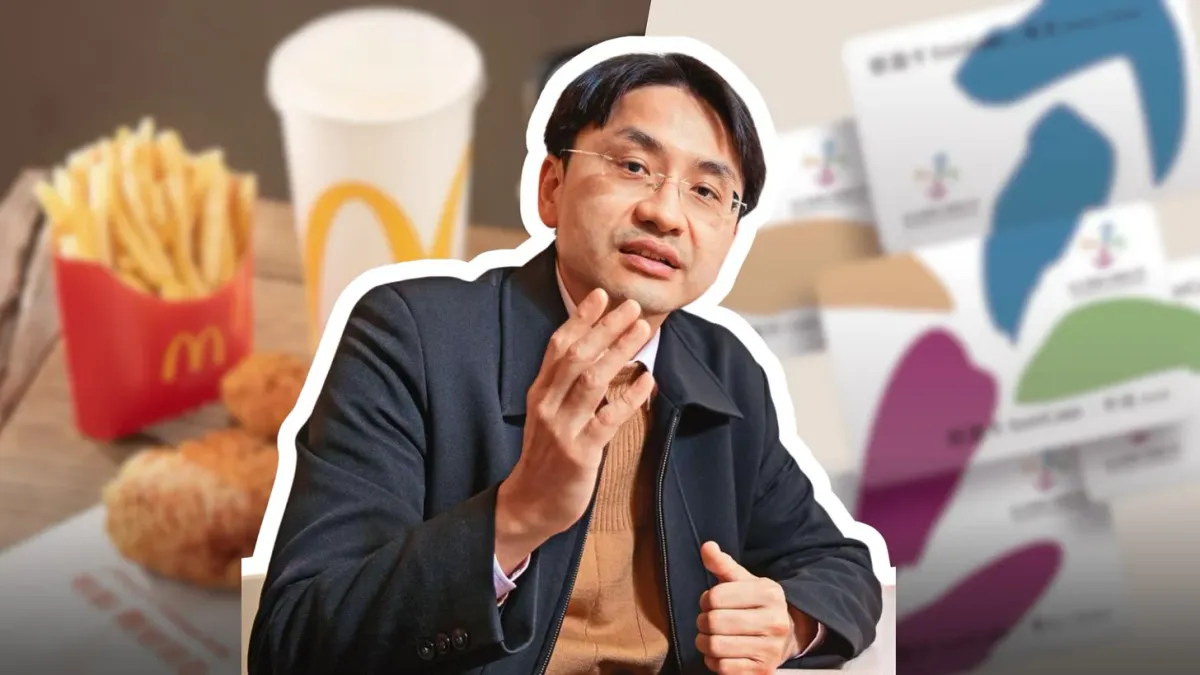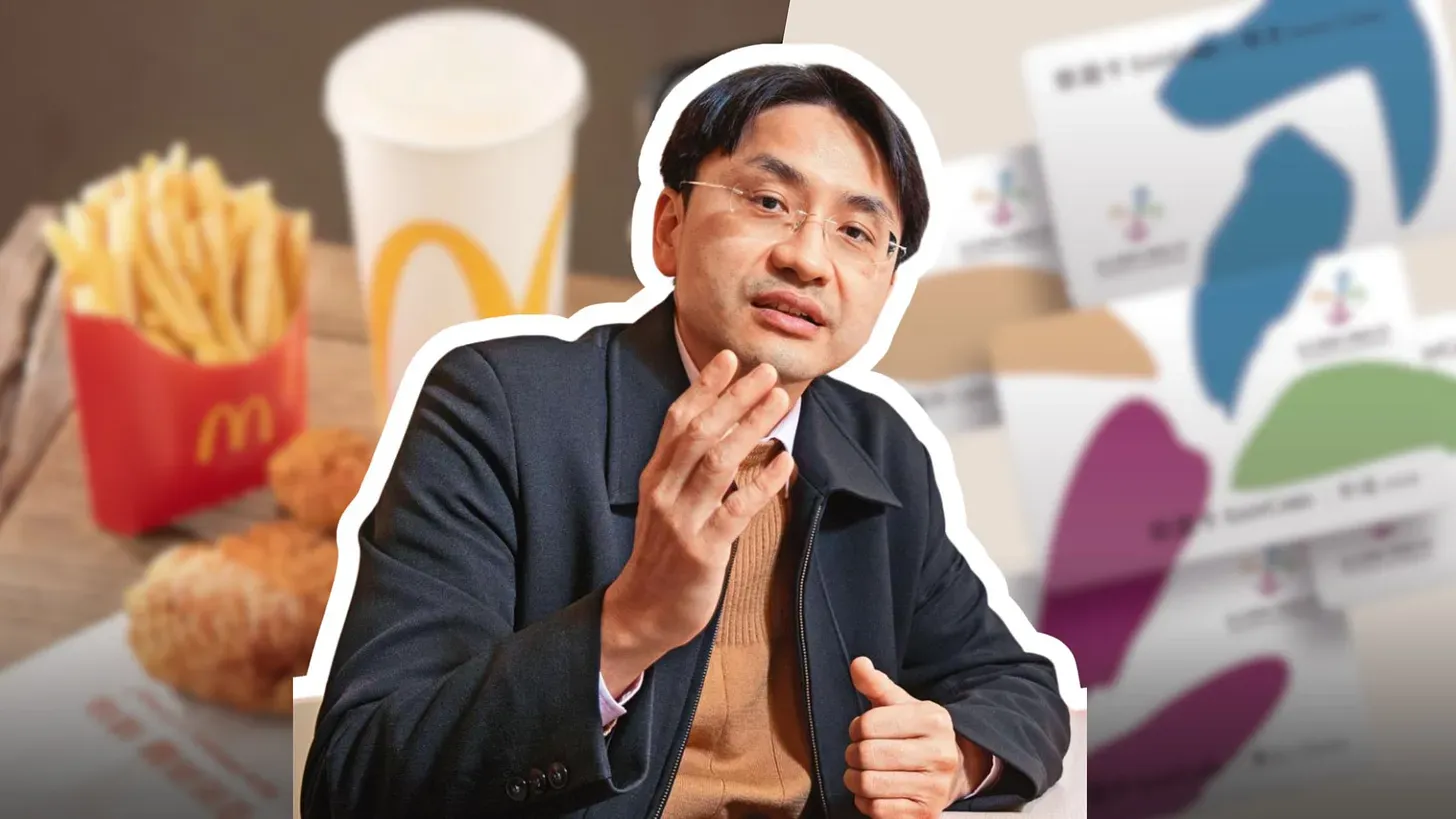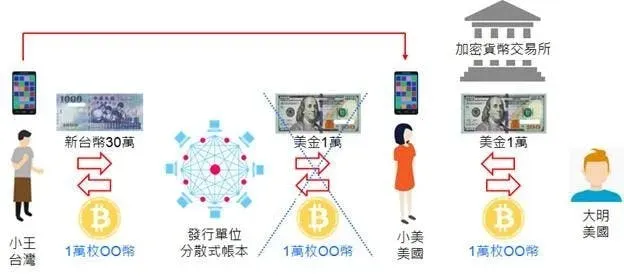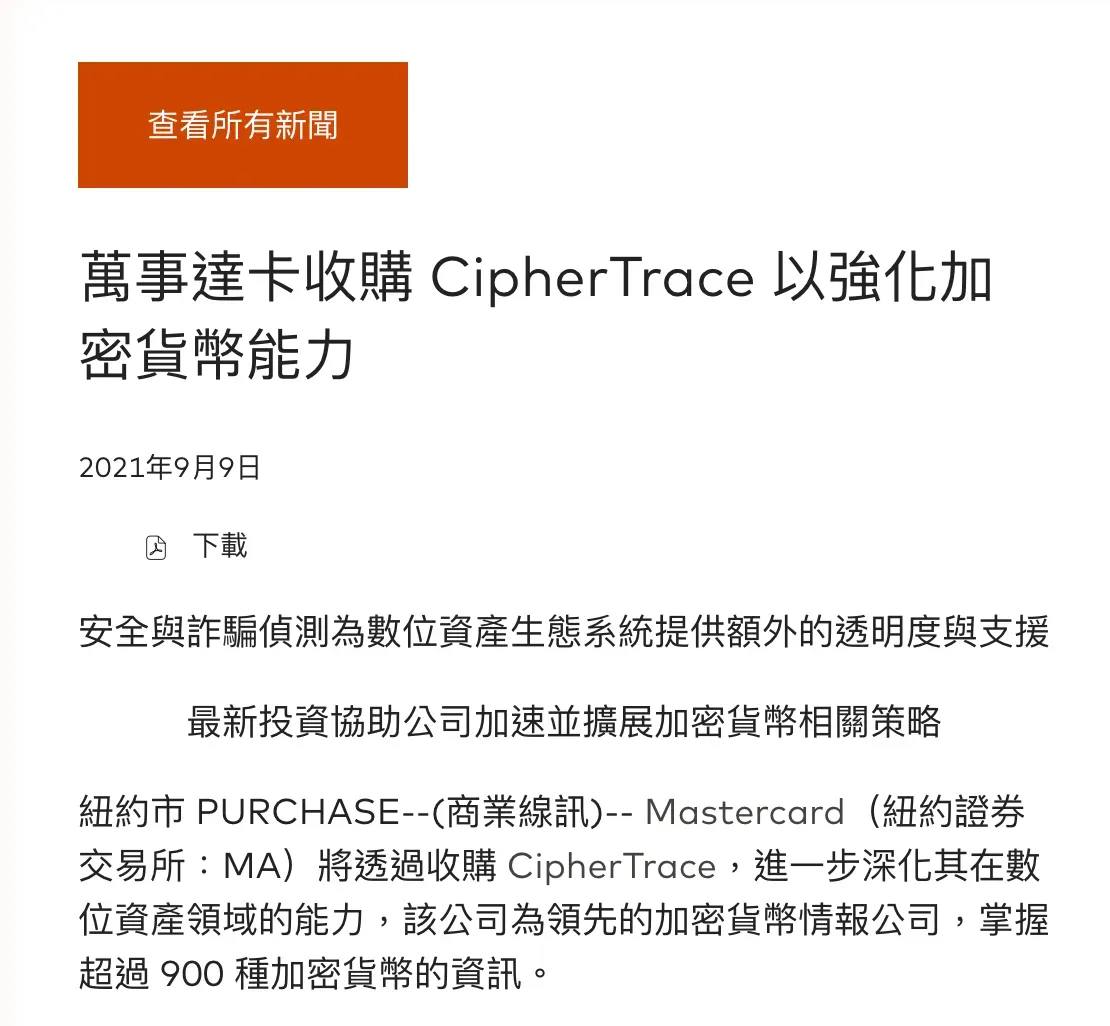Not Just the EasyCard—Is McDonald’s Stored-Value Card Also a Stablecoin?Understanding Three Major Blockchain Misconceptions from Chubo’s Article

GM,
Last month, in my article “To Chairman Jui-Bin Tung: EasyCard Is Not a Stablecoin, Here’s the Key Difference”, I discussed the fundamental distinctions between EasyCard and stablecoins. I made the piece public, hoping it could serve as a foundation for Taiwan’s conversation around stablecoins. Since its publication, two notable responses have emerged.
First, Chairman Jui-Bin Tung himself appeared on a YouTube program to further elaborate on his views regarding stablecoins and how banks should assist businesses in adapting. On the other hand, Chien-Chung Chu, founder of Chubo Tech Classroom, contributed a lengthy essay to The News Lens titled “Chubo Refutes Blocktrend: Mega Financial Holdings Chairman Is Right, Stablecoins Are Just Stored-Value Cards.” In his article, he not only supports the chairman’s original stance but also introduces a new argument, claiming that “even McDonald’s stored-value cards are stablecoins.”
Chu is a skeptic of cryptocurrencies, but that doesn’t mean he is unfamiliar with blockchain. His influence is significant, and his arguments indeed reflect common misconceptions about this space. After reading Chu’s article in full, I distilled three major “myths” and will dismantle them one by one. I’ll first outline Chu’s reasoning, then point out where the problems lie and back it up with concrete facts. Through this approach, I hope readers won’t just follow the debate for entertainment but will also be able to form their own judgments. As usual, this piece is fully open for everyone to read and share. Let’s begin with the stablecoin “OO Coin,” which Chu unfailingly brings up in every talk.

Innovation Has Nothing to Do with Blockchain
Chubo argues that the idea of “three-second, fee-free cross-border remittances with stablecoins” has nothing to do with blockchain at all—any ordinary computer could achieve the same.
He illustrates this with an example: in Taiwan, Xiao-Wang buys OO Coins with New Taiwan Dollars and wants to send them to Xiao-Mei in the U.S. The entire process, he says, doesn’t actually require blockchain. All it takes is one computer to deduct OO Coins from Xiao-Wang’s app account and credit the same amount to Xiao-Mei’s app account. Since it’s all happening on the same computer, of course the transfer can be instant, and naturally there are no fees involved. According to this reasoning, even a fast-food chain’s stored-value card could do the job.

Chubo uses an easy-to-understand scenario to argue that cross-border payments don’t need blockchain—stablecoins can do the job—while conveniently sidestepping existing regulatory requirements. The reason bank transfers via SWIFT are slow and expensive is because every transaction must undergo anti-money laundering checks, identity verification, and other compliance reviews. Stablecoins, by contrast, promise speed and low cost largely because they skip these compliance measures, not because the technology itself is inherently more efficient. Blockchain reduces fees mainly because no one is doing those compliance tasks for you. No wonder scams run rampant and hackers love using crypto.
One Computer Rules Them All
I call this line of reasoning the “One Computer Rules Them All” fallacy. According to Chubo, if one global computer can handle cross-border remittances, then why not just open a single Excel spreadsheet for the whole world? Wouldn’t that be faster and cheaper? But who guarantees that this Excel sheet won’t be tampered with, or that the computer won’t be hacked? And what happens if different bookkeepers’ records conflict?
Not only is single-computer bookkeeping impossible on blockchain, but even traditional finance doesn’t work that way. Banks close their counters at 3:30 p.m. every day precisely to handle clearing and reconciliation, making sure their ledgers align before sending records to the central bank for final settlement overnight. Blockchain achieves the same goal via consensus mechanisms, ensuring that all record-keepers (miners) worldwide keep synchronized ledgers. This consensus mechanism is the true reason on-chain transfers are efficient—it condenses banks’ daily reconciliations into just a few block confirmations.
If you’ve ever transferred crypto into a centralized exchange, you’ve probably noticed you had to wait for several block confirmations. During this time, the funds aren’t fully settled yet, and records could still be rewritten. Only after the confirmation threshold is reached do the funds become usable. The more confirmations, the harder the transaction is to alter. Blockchain’s consensus mechanism avoids the pitfall of “one computer bookkeeping” while ensuring all ledgers remain consistent—balancing both security and efficiency. Chubo surely understands these principles, but by failing to connect them to practice, he misleads readers into thinking one computer can handle everything.
The Shumai Meatball of Costs
When it comes to cross-border transfer costs, Chubo also seems to miss the point. The fees people pay banks for international wire transfers via SWIFT are not “compliance costs.” They’re service fees for clearing and coordinating across international networks. Compliance processes do cost money, but banks treat them as fixed operating expenses, not something itemized per transfer and billed to the user. Blockchain’s cost structure is actually quite similar.
On-chain remittance gas fees correspond to SWIFT wire transfer fees. Meanwhile, the per-transaction compliance costs are borne by stablecoin issuers and centralized exchanges. Every year, these firms spend heavily on blockchain analytics tools like Chainalysis, TRM Labs, and Elliptic. Mastercard even acquired CipherTrace to strengthen its blockchain transaction monitoring.
Chubo lumps SWIFT fees and banking compliance costs together into one messy “shumai meatball” (like the mixed meatballs from The God of Cookery, stuffed with everything but impossible to tell apart) and concludes that cheap gas fees exist only because there’s no regulation. That’s a false comparison.

It’s undeniable that cryptocurrencies are often used in criminal activity. But the primary reason isn’t that industry players ignore compliance—it’s that cryptocurrencies don’t require every transaction to pass through a centralized exchange. Although digital in form, cryptocurrencies can be held directly by individuals, just like cash, without ever touching a financial institution. This new model creates new problems, which leads to Chubo’s second criticism of blockchain: that cryptocurrencies lack regulation.
The Lack of Regulation in Crypto
Chubo argues that stablecoins are convenient and fast precisely because they lack regulation. Once regulation is imposed, he claims, stablecoins will end up functioning just like stored-value cards such as Taiwan’s EasyCard.
As an example, Chubo notes that while USDT enables financial inclusion, it also means that drug cartels and fraud rings can use it freely. Only unregulated stablecoins allow such activity to occur. In contrast, EasyCard is well-regulated: merchants must comply with identity verification, and transaction amounts are capped. This doesn’t mean EasyCard is technologically inferior to stablecoins—it’s a safeguard to ensure that if the system is hacked or fraud occurs, risks remain within manageable limits. By contrast, blockchain assumes “hackers don’t exist,” leaving itself completely exposed.
Chubo also rejects the way the U.S. regulates stablecoins. He claims that today’s regulatory agencies are run by crypto industry insiders: laws may look reasonable on paper, but the flexibility written into them is actually a backdoor. In other words, government and regulation have already been compromised. Chubo highlights what he sees as the real problem: the U.S. government lacks someone with “conscience and integrity”—an expert like him, who understands blockchain, tells the truth, and can expose the hype of the crypto industry. The result, he says, is collusion from top to bottom, with the entire nation—indeed, the entire world—fooled.
Airplanes Don’t Stop at Red Lights
I call this line of reasoning “Airplanes Don’t Stop at Red Lights.” Are airplanes fast because they don’t stop at traffic lights? Obviously not. Air travel follows its own system of rules—air traffic control, radar systems, and flight corridors. Chubo’s claim that stablecoins are useful only because they lack regulation is like saying airplanes are fast only because there are no red lights in the sky. It ignores blockchain’s consensus mechanism (discussed earlier) and mistakenly applies ground traffic rules to the skies.
Furthermore, Chubo’s view contradicts the actual experience of U.S. regulators. SEC Commissioner Hester Peirce recently stated in an interview that many of the high-profile failures in crypto “were not actually crypto” problems. What regulators witness daily are bad behaviors by centralized institutions toward their customers. Fraud, drug trafficking, and smuggling existed long before cryptocurrencies and cannot be blamed on crypto itself.
How should regulators balance risk and innovation? Hester Peirce’s perspective is:
“If you don’t allow innovation to happen, you’re actually depriving the very people you claim to protect of the opportunity to access better products and services... We as regulators have to take the risk of allowing innovation to happen. If you keep innovation out, no one will blame you; but if you let innovation in and something goes wrong, people will blame you. So as regulators, we need to bear that risk.”
Clearly, the U.S. government is not as naïve as Chubo claims, assuming that “hackers don’t exist.” Rather, it recognizes the risks but believes the benefits of driving innovation outweigh the downsides—so it is willing to take the bold step of embracing it. Who better understands regulatory practice: Chubo, writing articles, recording videos, and teaching courses in Taiwan, or actual U.S. officials tasked with striking this balance? I think readers already know the answer.
The Unspeakable Interests
Finally, Chubo boldly asserts that the entire crypto industry is nothing more than a meticulously designed scam. From mining, to exchanges, to stablecoin issuance, and now to the recent IPO of the “OO Coin” company (Circle), he claims it is all just a “fraud cycle” fueled by aligned financial interests.
Chubo argues that Bitcoin was originally a worthless “air coin.” But once people wanted to buy it, a supply-and-demand market emerged. Miners, realizing they always had to sell the Bitcoin they mined, thought: why not also start an exchange and earn fees? Once they became exchange owners, they realized that since both crypto and cash flowed through their hands, they could simply issue stablecoins—essentially printing money out of thin air. Eventually, these money-printing companies sought regulatory approval by going public, drawing even more cash directly from investors.
According to Chubo, the industry is now in this “fourth stage.” He predicts more stablecoin issuers will race to list publicly, further tying virtual crypto with traditional finance. As the bubble grows, once the narrative can no longer hold, another financial crisis will inevitably erupt. Because crypto has already been embedded into traditional finance, even stock market investors who never touched crypto may be dragged into the fallout. And those currently urging you to invest in crypto and painting a bright future for blockchain? Chubo claims they likely share the same vested interests—sailing on the same ship—only they’re not telling you.
Someone Must Be Lying to You
I call this line of reasoning “Someone Must Be Lying to You.” Chubo is skilled at storytelling, but he often blurs the line between fact and fiction. His narrative mixes real elements with imagined ones. For example, it’s true that most miners sustain their operations by selling coins, but I honestly don’t know of any exchange that was founded purely because miners wanted to offload their coins. It’s also true that some entities both operate an exchange (Bitfinex) and issue a stablecoin (USDT), but those are not the same people as the company recently listed on the U.S. stock market. Stringing together these unrelated events, which occurred at different times and contexts, into one grand conspiracy is certainly memorable.
But the biggest logical flaw is this: if Chubo’s conspiracy were real, why haven’t the very regulators he trusts most exposed it? Is it because they don’t understand blockchain well enough? Or because they’re afraid to speak the truth? Or have they already been captured by the crypto industry, becoming part of this supposed fraud chain? By this point, readers may notice that Chubo positions himself on a moral high ground as “the only one brave enough to tell the truth.” Anyone who disagrees with him is either complicit or ignorant. Only he, with “conscience as vast as heaven and earth,” dares to stand against the crowd and expose the so-called truth of the industry. Even the regulators he trusts end up being caricatured as inconsistent—sometimes capable of crafting perfect rules, other times easily duped.
Isn’t it also possible that these people are not fraudsters at all—and instead it is Chubo who is deceiving himself? Cryptocurrency certainly has its problems, but without genuine understanding, progress will always remain out of reach.
p.s. McDonald’s “Sweetheart Card” doesn’t even have a stored-value function. All it does is let you show A + B ...






